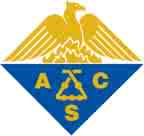 Symposium
of the
DIVISION of ANALYTICAL CHEMISTRY
Symposium
of the
DIVISION of ANALYTICAL CHEMISTRY

Department of Chemistry, SUNY-Potsdam Slide 1 2 3 4 5 6 7 8 9 10 <<< >>>
Presented at:
The National Meeting of the American Chemical Society
Boston, MA, August 22-26, 2010
 Symposium
of the
DIVISION of ANALYTICAL CHEMISTRY
Symposium
of the
DIVISION of ANALYTICAL CHEMISTRY

5. DNA intercalation biosensors for studies of interactions of herbicides and pesticides with DNA
Kaitlin Coopersmith, Amanda Prance, Magdalena Stobiecka, and Maria Hepel, Department of Chemistry, State University of New York at Potsdam, 44 Pierrepont Ave., Potsdam, NY 13676, Fax: 315-267-3170, hepelmr@potsdam.edu
|
Abstract. The DNA biosensors emerge as one of the most attractive means of testing genetic and infectious diseases, interactions with proteins and drugs, as well as for the detection of genetically modified organisms. Herbicides and pesticides are very serious environmental pollutants which may cause DNA damage, cancer, and many diseases. In this work, we have investigated voltammetric and nanogravimetric DNA biosensors for studies of the toxicity and DNA damage caused by various herbicides including commonly used atrazine. The novel sensors designed were based on self-assembled modified gold piezoelectrodes used for immobilization of short-chain oligonucleotides. The Nile Blue redox fluorescent dye was used as the indicator of alterations in DNA double-helix caused by the interactions with atrazine. An enhancement of the sensor response to the DNA damage was achieved by incorporating gold nanoparticles to the sensory film. The unwinding process of DNA was also investigated by fluorimetric methods in solution.
Figure 1. Fluorescence emission spectra for Nile Blue with different concentrations of ct-DNA; CNB= 2 mM, 20mM Tris-HCl pH 7.5. CctDNA , [uM/bp]:(1) 0, (2) 0.202, (3) 0.404, (4) 0.606, (5) 0.808, (6) 1.01, (7) 1.212, (8) 1.414, (9) 1.616, (10) 1.818, (11) 2.02, (12) 2.222, (13) 2.424, (14) 2.626. |
 |
|
Back to Student/Faculty Research Department of Chemistry